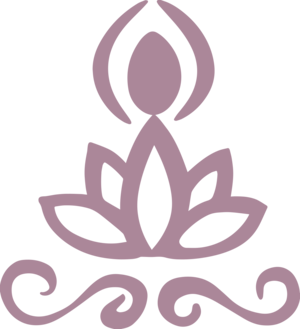
yoga beyond asana…
pranayama ~ mudra ~ mantra ~ bhavana ~ chakra ~ ashtanga ~ panchamaya koshas
be inspired
Yoga Anatomy
Yoga Therapy uses the full breadth of the tools yoga has to offer thus creating a holistic approach to healing the body, or at the very least creating ease and lasting improvements to the quality of a person's life.
Yoga differs from medical science in so many ways because works within the subtle realms which are not always measurable with our modern science. But modern science was not available in India when these techniques were being developed. The framework of the understanding of the human body is different, it doesn’t mean it is less valid.
In Yoga Therapy we use asana, but we teach the student not the pose, the Asana-s are modified to fit the current needs of the student. Additionally, we use Pranayama, breath techniques, Mudra-s, hand and finger positions, Mantra, sound and Bha(a)van(a), visualization. All of which work with in the framework of the traditional Yogic Anatomy. This yogic model is sadly being lost to yoga students as teachers avoid using these tools, lest they are not taken seriously, or appear flaky. But it is these very tools with has made yoga such a special discipline.
Asana
Yoga Pose
This is what we are most familiar with in our yoga practice. It was the ability to sit comfortable for long periods of meditation.
Asana - seat.
In modern yoga asana creates mobility, the balance of strength and flexibility. Ideally practiced with the mindful balance of effort and easy. And the remembrance that we do not use our body to get into the pose, but we use the pose to get into our body.
Bhavana
Visualization
Bhavana is the cultivation, or the calling into existence a particular attribute or quality on the path of self realization.
Bhaava - becoming. Ana - instrument.
A way of inhibiting, or experiencing our self in a different way.
Pranayama
Breath Techniques
Pranayama and breathing are not the same:-).
We want to be conscious of our breathing during yoga, and the basic breathing taught in yoga class is the foundation of pranayama.
Prana - energy. Yama - control.
Pranayama is practiced to create physiological within our body.
Chakra
Energy Centres
These are vortexes of energy within the body. Chakras have been studied by many different cultures globally, and although there are variations to each system, there is a multitude of over lap.
Chakra - wheel.
With the rising popularity of yoga the system we are most familiar is the basic hindu system of 7 chakras which correspond with nerve ganglia along the spine.
Mudra
Hand Positions
Mudra means ‘seal’. Mudra is often used during pranayama or meditation, and the direct the flow of energy (Prana) within the body.
Energy flows where attention goes :-)
Ashtanga
Eight Limbs
Ashtanga is a recognized Sanskrit word usually associated with a particular style of Hatha yoga.
Ashta - eight. Anga - limb.
Long before westerners were practicing yoga and branding Patanjali summarized the philosophy of yoga in 195 sutras. 31 of these little pearls of wisdom outlined an 8 fold path to enlightenment. A journey from the outer world to the inner world.
Yamas - Self Regulation
Niyamas - Personal Observance
Asana - Posture
Pranayama - Breath Control
Pratyahara - withdraws of the senses
Dharana - Concentration
Dhyana - Meditation
Samadhi - Equanimity
Mantra
Sound (Vibration)
Mantra loosely translates as tool of the mind. When practiced regularly it helps the mind to focus.
Man - mind. Tra - tool.
Mantra deepens the mediative aspect of a yoga practice and deepens our self awareness.
Panchamaya kosha
Five Sheaths
These are metaphorical layers of awareness. They act as filters which colour our experience of the present moment.
Kosha - sheath. Maya - illusory. Pancha - five.
Anandamaya kosha – Bliss – the illusory sheath of bliss that separates us our I-ness
Vijnanamaya kosha – Wisdom, intuition, Beliefs, Personality
Manomaya kosha – Mental, our thoughts, how we process sensory input
Pranamaya kosha – Vitality, feelings, our emotions, sensory input
Anamaya kosha – Physical, the vehicle in which we experience the other koshas.
Why I do yoga…
To have the strength to live authentically in my core values…
To have the flexibility to be compassionate, kind and without judgment …
This establishes mobility to remember grace and gratitude. to live in balance, in equanimity, no matter what comes my way…
I am learning…
Yoga Designations
Breathe
to pause. to make space. to collect your thoughts. to remember. to face the next moment. to choose.



